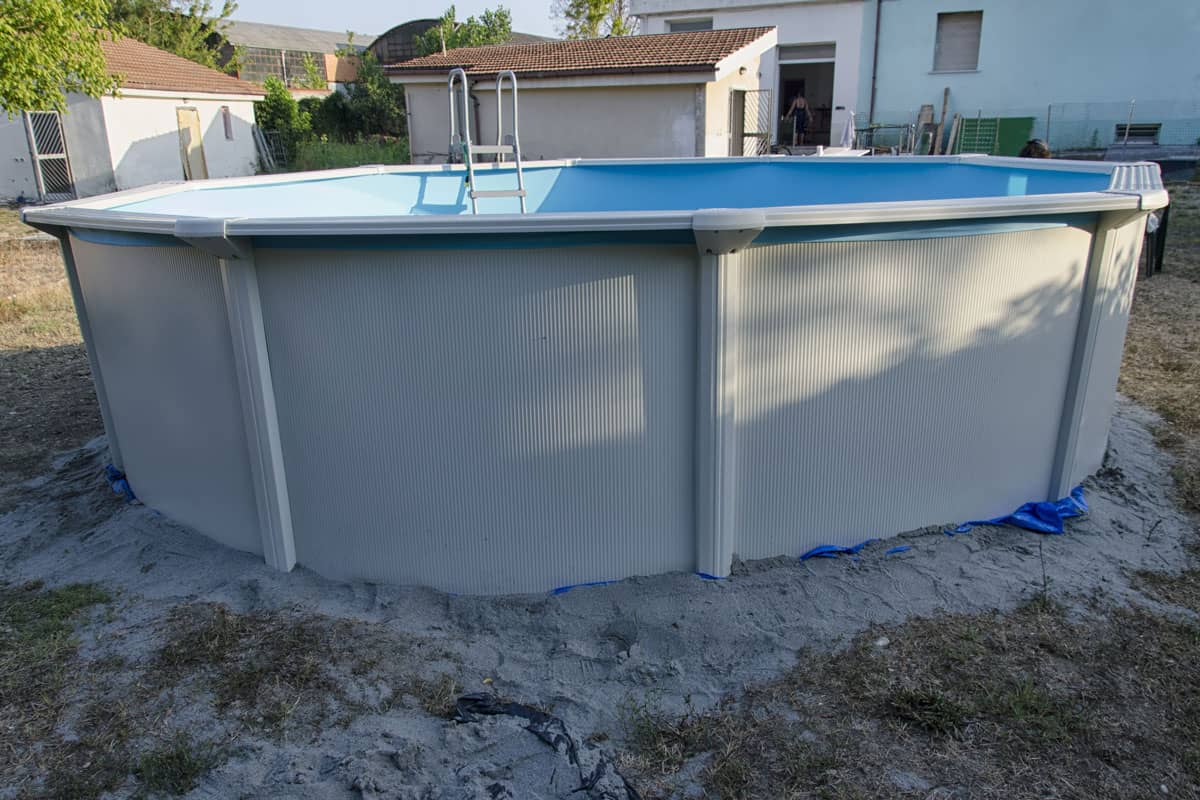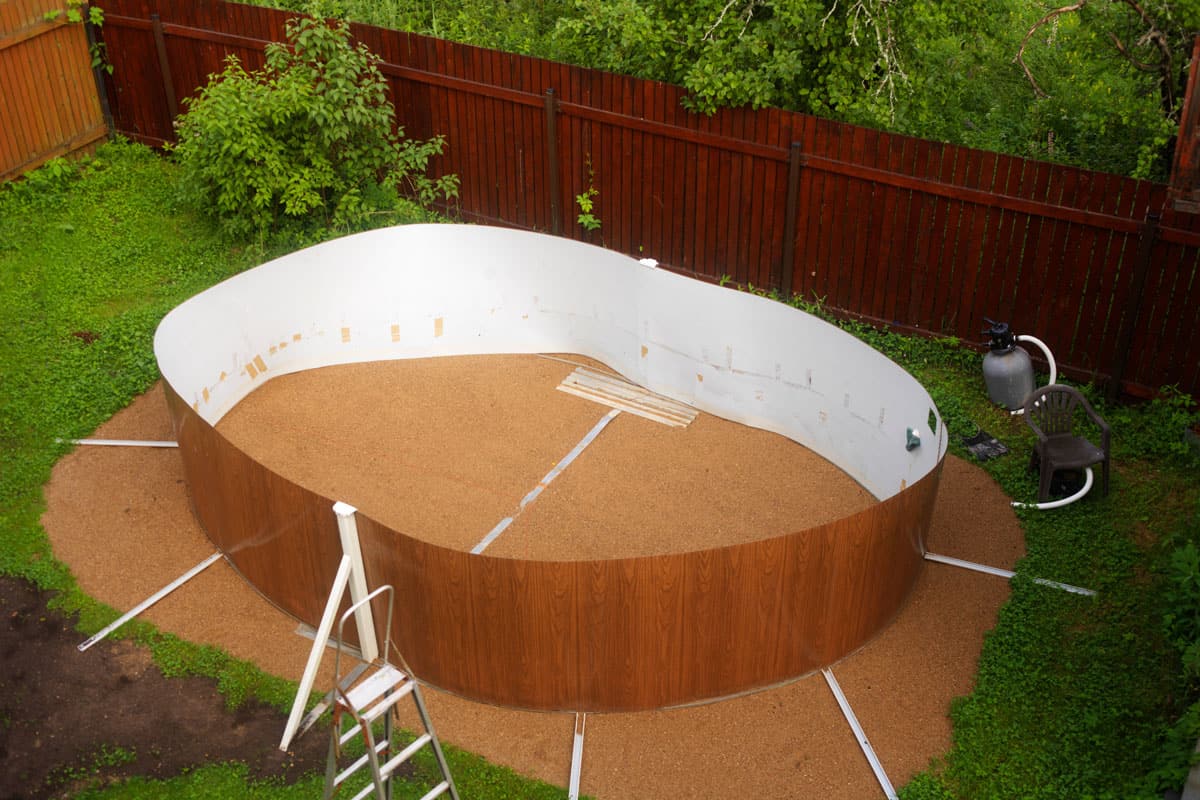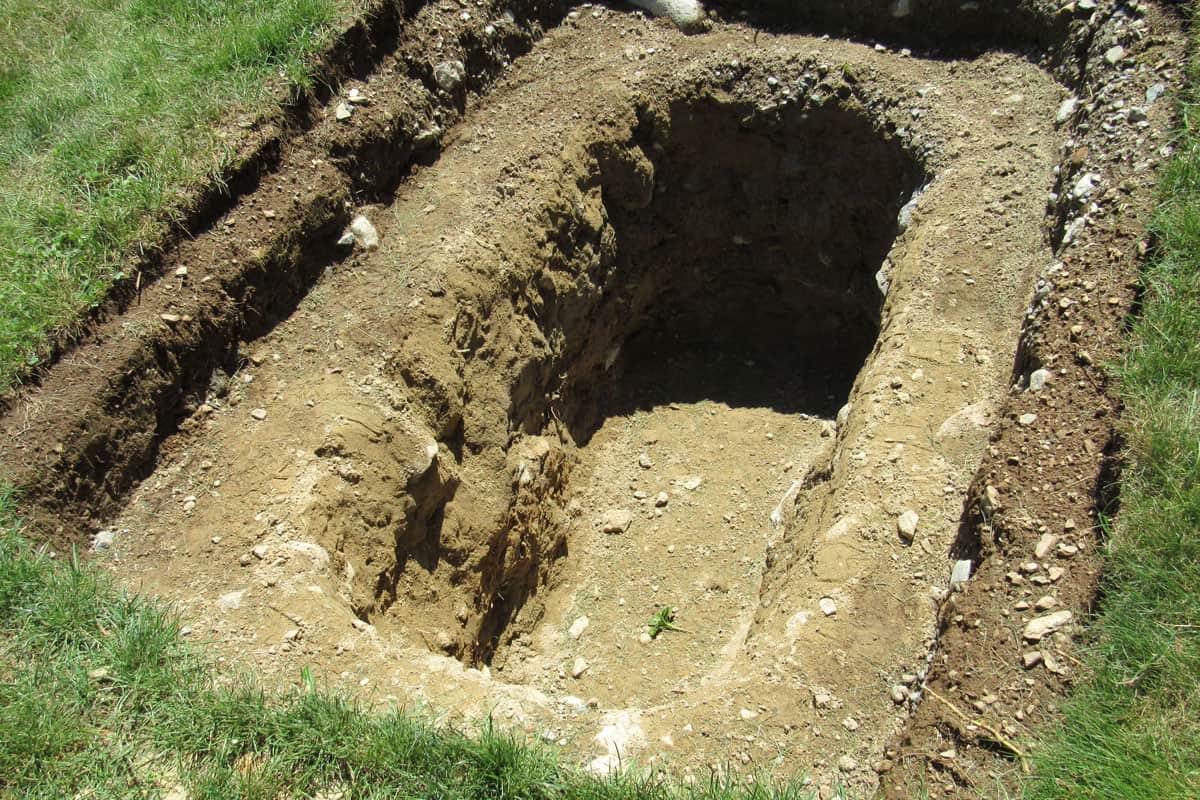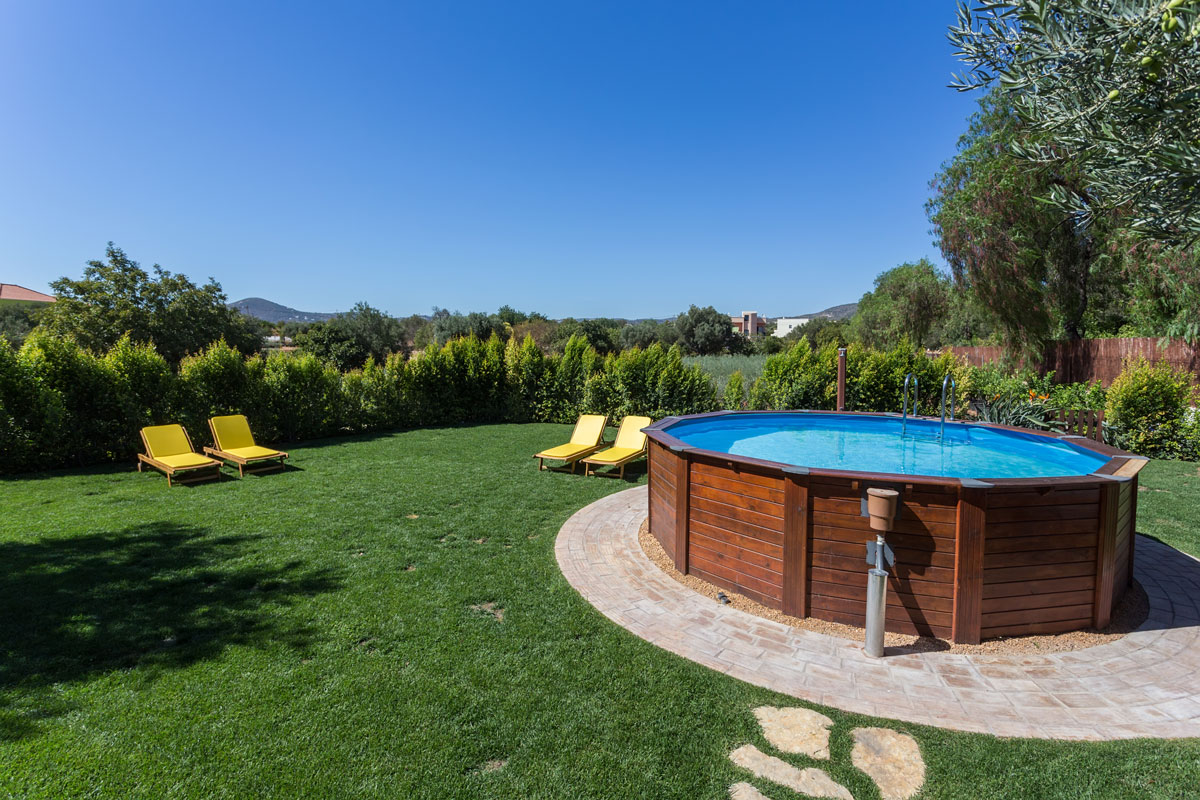Any backyard renovation is bound to be a tough job. If you have a backyard that used to have an above-ground pool, you will have a hole and compacted dirt to deal with. But how do you go about filling this eyesore? After some research, we answer your question for you in this post. Keep on reading!
You should fill the hole from an above-ground pool with topsoil. Make sure to measure how much soil you will need before purchasing. Here are the steps for filling the hole:
- Drain accumulated water from the hole
- Till the compacted soil
- Fill the hole with topsoil
- Level the ground and landscape
In the next sections, we will go over each step in more detail, along with some tips that can help you with this project. This post also showcases some backyard ideas you might want to try after filling the hole. To learn more, read on!
How Do You Fill A Swimming Pool Hole?
You can fill the hole from an above-ground swimming pool by yourself, with some help, or hire a contractor to do it for you.

You can make it a DIY job with the right tools and materials. Note that this is a job you should do right before fall if you are planning for any grass growth.
Along with filling soil, here are some materials you will need:
- shovel
- tiller
- drainage tools
- wheelbarrow (for transporting the soil)
- safety equipment (for personal protection)
Choose a day when the weather is clear to do this project. This will make draining easier. If you start early, you can have the hole filled by the end of the day.
![above ground pool sets on concrete wide yard on the garden, How To Fill Hole From Above Ground Pool [Inc. Backyard Ideas You Will Love]](https://gardentabs.com/wp-content/uploads/2022/12/How-To-Fill-Hole-From-Above-Ground-Pool-Inc.-Backyard-Ideas-You-Will-Love.png)
1. Drain Remaining Water From The Hole
If the above-ground pool has been left unfilled for a while, then spillover poolwater or rainwater will have accumulated.
You need to drain this water before filling the hole. You can try letting it dry under the sun over the summer, but if it is still there when you want to fill the hole, you have to get rid of it yourself.
There are a couple of ways that you can go about draining the hole. One is to locate the nearest drain and dig a trench from the lowest point of the hole. This trench will lead up to the drain, allowing all the water to trickle off slowly.
However, if you can't access a drain this way, you may need to use a siphon. You can rent a pump to siphon out the water from the hole.
This is the fastest way to drain the water, though you might not have easy access to a pump. In that case, you can still siphon off the water with a little bit of physics.
For siphoning water without a pump, you will need a pipe or garden hose. Locate the part of the hole that is the deepest, and put one end of the pipe or hose into it.
Then, take the pipe or hose across your yard to a location with an elevation lower than that of the hole. Place the other end of the pipe or hose on this lower area.
As water passes into the hose from the hole, gravity will start pulling it through the hose down the end with a lower elevation. This will take some time and a bit of manipulation, but it should work if you it set up right.
2. Till The Compacted Soil
After you have drained the hole and let the soil dry, you will be left with highly compacted soil.
You will want to till this to have even groundwork. Tilling will also benefit future gardening plans. You may even find that the volume of filler topsoil you need will be less after you till the compact soil.
To till the soil, you can rent a tiller or use your own if you have one. For extremely compact soiled, it is best to use a motorized tiller rather than a handheld or ratchet garden tiller.
Click here to see this electric garden tiller on Amazon.
3. Fill The Hole With Topsoil
Once you have drained, tilled, and leveled the compacted dirt, it is time to fill the hole.
You might think that you need to put in some other filler, such as gravel or sand, but this is not necessary for a hole left by an above-ground pool. The hole is too shallow, so there will be no need. You will risk ruining the topsoil.
Gravel and other types of filling are helpful for bigger holes like those left by in-ground pools. In the case of an above-ground pool hole, you should only use topsoil for filling.
Dirt or soil is typically measured in cubic inches or cubic yards. Try to get the shape of the hole to be as even as possible for ease of measurement. From there, determine the volume of topsoil you need.
Fill the hole and pack the soil in, but not too much. If you make the soil too dense, it can get lumpy, especially as you till. However, if there is too little soil, it will quickly sink and leave a shallow hole.
4. Level The Ground And Landscape
After you have filled the hole, level it with the rest of the yard. This is also the best time to plant grass, so long as it is in the fall. Keep in mind that grass can be difficult to grow in the summer.
There are several ways you can go about landscaping your backyard once you've filled the hole. Check out the next section for some ideas!

Backyard Ideas You Will Love
Backyards are very versatile when it comes to landscaping. You can make your yard an open space for play or install some playsets if you have children.
Some backyards are more ornamental, while others are converted to gardens or communal areas. Backyards may also be a combination of different elements.
Consider turning that filled-up pool hole into a fire pit like the one shown above. Rather than topsoil, cover it up with stones, gravel, or concrete. While this fire pit uses wooden deck chairs, you can get creative with how you decorate it to suit your tastes!
You might be the type who likes to grow your own food. In this case, backyards are perfect for putting together a vegetable garden. Grow foods native to your climate and region for best results.
Flower gardens are another great way to elevate the look of your backyard. You could even mix elements of edible and ornamental plants by starting a potager garden.
You can grow flowers around your backyard perimeter or have them cover most of the space, as in the next photo.
As with vegetable gardens, it is best to grow flowers native to your region. The flowers will not only look beautiful and grow easily but will also help boost the ecosystem in your area.
Here is another way you can set up your backyard with a garden.
If you live in a region with good weather, you can reserve a part of your garden as an outdoor lounge space.
If you have children, playsets like slides, swings, or cubby houses are a great addition to your backyard. You can try building one yourself or purchasing one!
Click here to see this backyard set on Amazon
How Do You Fill A Hole From An In-Ground Pool?

The steps for filling a hole from an in-ground pool are quite similar to those for filling an above-ground pool, although the task takes longer and is more expensive. This is also referred to as backfilling a pool.
Here is an overview of how to do it.
First, you will have to drain the pool. Once it has dried out, you will need to dismantle the walls and floor. You might have to hire a contractor for this job.
Make sure to tear out all the concrete so that you don't leave any other material underground when you backfill. Once you get rid of the pool materials, you can move on to backfilling the hole with your preferred filler.
As we mentioned before, you can use gravel or sand for this step. You can even use dirt or soil if you can afford it. Make sure to level and finish the backfilling process with a good layer of topsoil.
Wrapping Things Up

You will need topsoil to fill a hole left by an above-ground pool. Drain out any remaining water, till the compacted soil, and then fill the hole. Once the area is nice and level, you can move on to landscaping!
Feel free to take inspiration from the examples we showed you in this post. While this can be a DIY job, don't hesitate to call a contractor for assistance.
Did you find this post helpful? If you did, check out our other articles before you go!


